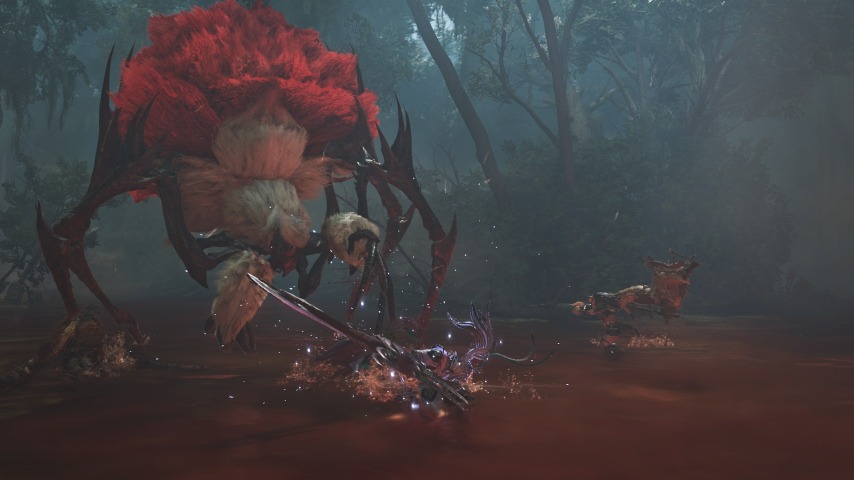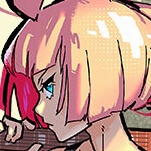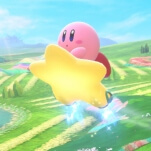Butt cutting—or, to put it in less-puerile-but-also-less-personally-amusing-to-me terms, tail severing—has been a part of Monster Hunter‘s playbook since its very first game, released on the PlayStation 2 back in 2004. The concept isn’t complicated: Apply enough “severing” damage to a monster’s tail, and the thing will eventually pop off, to the exultant cheers of everyone you’re currently hunting with. There are practical reasons to sever tails: Many monsters have rare parts that are more likely to come glooping out when you carve the butt meat, and some of them, including series-regular-that’s-pretty-much-just-a-dragon Rathian, incorporate their tails into attacks, so severing can reduce the beast’s ability to harm you. But everyone who’s spent much time with these games knows that that’s not really why so many players obsessively go for the snip.
Monster Hunter, once you peel back all its extraneous material—which, again, Wilds has done to a fairly brutal degree, eliminating huge swathes of the game that didn’t directly involve combat—is a series about boss fights: Big, protracted battles with a singular foe who is bigger than you, hits harder than you, and who can take far more punishment than even the most geared-up Hunter is capable of withstanding. The games’ rosters of monsters present vast gradients of difficulty and skill requirements to hunt, but at their core, they’re all about putting you face-to-fang with a very basic video game concept: Little player, big enemy, kill it before it kills you.
Diagnosing everything that goes into a good boss fight is way outside the scope of a single gaming column that has already used up The A.V. Club‘s whole allotted quota of the word “butt” for the entire week. But variety plays a major part in it. Hunts in Monster Hunter are long, even before you factor out the travel time that occurs when you’re first getting to a monster, or running after it once it scarpers off after a few minutes of clashing. The games employ a number of mechanics to keep these battles from becoming too monotonous, most of which come in the form of varying how dangerous the monsters are from moment to moment. (The biggest example is the games’ rage mechanic, which sees monsters start flipping out on you the more you hurt them. For early-game monsters, that usually just means more aggressive attacks; for the hideous demi-gods that start crawling out of the woodwork later on, it can ascend to the level of small-scale tactical nukes.)
From the player side, though, varying what you’re doing can be trickier, since “what you’re doing” basically boils down to “smack this dangerous and majestic beast with a stick until all its internal organs have been rendered fatally external.” Wilds, despite its faults, gets this: The game’s new wound system, where you break open individual areas of a monster’s hide to create new weak points that can then be exploited for a variety of benefits, is all about creating these sorts of sub-goals; ditto the increased abundance of environmental weapons that can be brought to bear on your titanic foes. Doing the same thing for 20 minutes can get tedious, no matter how big the teeth or tentacles or laser beams that come attached to it might get. (Multiplied even more by the fact that you’re expected to hunt these dudes time and time again.) Breaking that big goal down into individual tasks, with an accompanying moment of triumph as you dump 1,000 damage worth of rubble onto the head of the dinosaur you’ve lured into place beneath it, helps establish a rhythm of smaller successes that keep the energy up amidst the longer war.
Tail severing, then, sits at the apex of this idea. It’s not easy, for one thing (although Wilds has generally made it simpler): Monsters in these games tend to tower over the player, so even just getting up to the appendage in question can be a struggle. (Also, you’re not allowed to cut the tail off after the monster’s already dead, even though that certainly seems like the best time to cut off someone’s butt.) Not all weapons do the right type of cutting damage, either, which can lead to fascinating combos between players that can make the whole thing feel like a team effort: My buddy’s big blunt hammer might not be good for carving, but he can use it to knock an Anjanath on its ass, after which I take my much sharper Charge Blade to said ass to buzzsaw away at the hindquarters so we can all enjoy the ensuing pop. Also, and it’s important not to discount this, the kinesthetics of a good sever are frankly amazing: Watching part of the monster that’s been kicking your own butt suddenly pop up, flying into the air, and leaving behind a stomach-turning stump, is a euphoric moment that’s often more thrilling than the actual kill.
Like I said, Wilds gets why players want to do this, even if, true to form, its haste to serve these moments can venture into the realm of indulgence. (Maybe this is just a function of me switching to the high-flying Insect Glaive for this installment, but it feels like whatever glue monsters use to hold their tails on in Wilds is weaker than it was in previous games.) You could argue that at least half the reason Capcom added squid-like enemies to Monster Hunter‘s bench this time around is the potential to watch multiple wriggly appendages go flying in every fight. But the game’s approach to this idea is, in some ways, a summation of Wilds as a whole: It’s a little too eager to serve up satisfaction—which doesn’t stop my brain from being stupidly satisfied when it does.









































